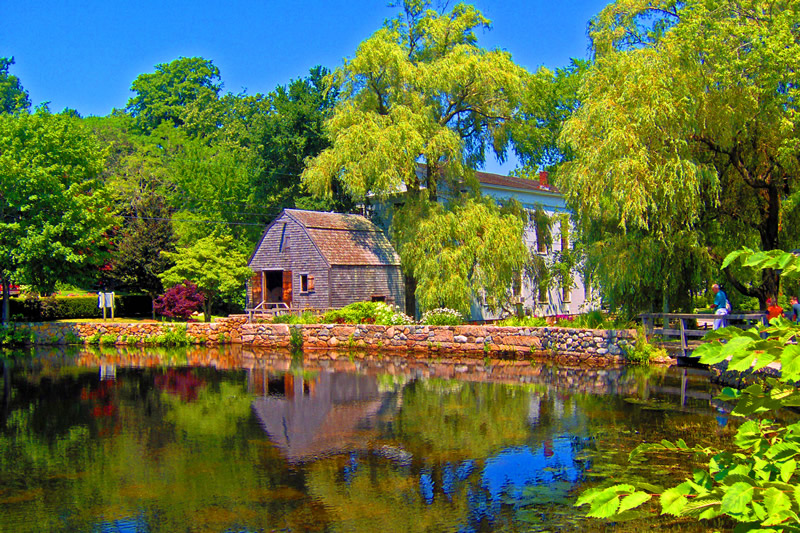Sandwich
Incorporated in 1639, Sandwich is the oldest of the Cape towns. During the town’s first 100 years, the English settlers farmed the land and ran small coastal fishing enterprises.
EAST SANDWICH
FORESTDALE
SANDWICH
SOUTH SANDWICH
Sandwich History
Sandwich was also an important stagecoach stop on the Old King’s Highway (now Route 6A) from Boston to Provincetown;
it quickly became a center for travel and tourism. Taverns and inns cropped up along the main street. Wealthy Boston travelers on business and vacation stayed at these establishments en route to other parts of Cape Cod. The Fessenden Tavern (later called the Central House) was one of the most famous stops; it was noted for being the Patriot Headquarters before the Revolutionary War and was later renamed for its most popular guest, Daniel Webster. Across town, Newcomb’s Tavern, served as the Tory headquarters.
In the early 1800s, factories were started in the region, taking advantage of the national resources of land, waterpower and wood fuel. The Boston and Sandwich Glass Company was founded in 1825 and grew steadily over a 63-year period to employ 500 workers who created various types of glassware. The company is best known for its pressed-glass items, which could be produced quickly, inexpensively and in large quantities for sale to middle-class shoppers desiring fine objects for their homes. The Boston and Sandwich Glass Company closed in 1888 after the center of pressed-glass production shifted from New England to the Midwest, where the cost of glassmaking was less expensive. Today, glass made at the Sandwich factory is a highly prized antique collectible. The Sandwich Glass Museum, located across from the Grist Mill in the center of Sandwich village, displays thousands of glass objects made at the factory during the 19th century.
Museums in Sandwich, such as Hoxie House, Heritage Museums and Gardens, and Thornton Burgess, are windows to our past and give us a sense of what life was like in the early days of America.

